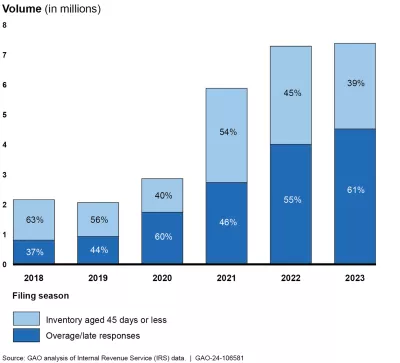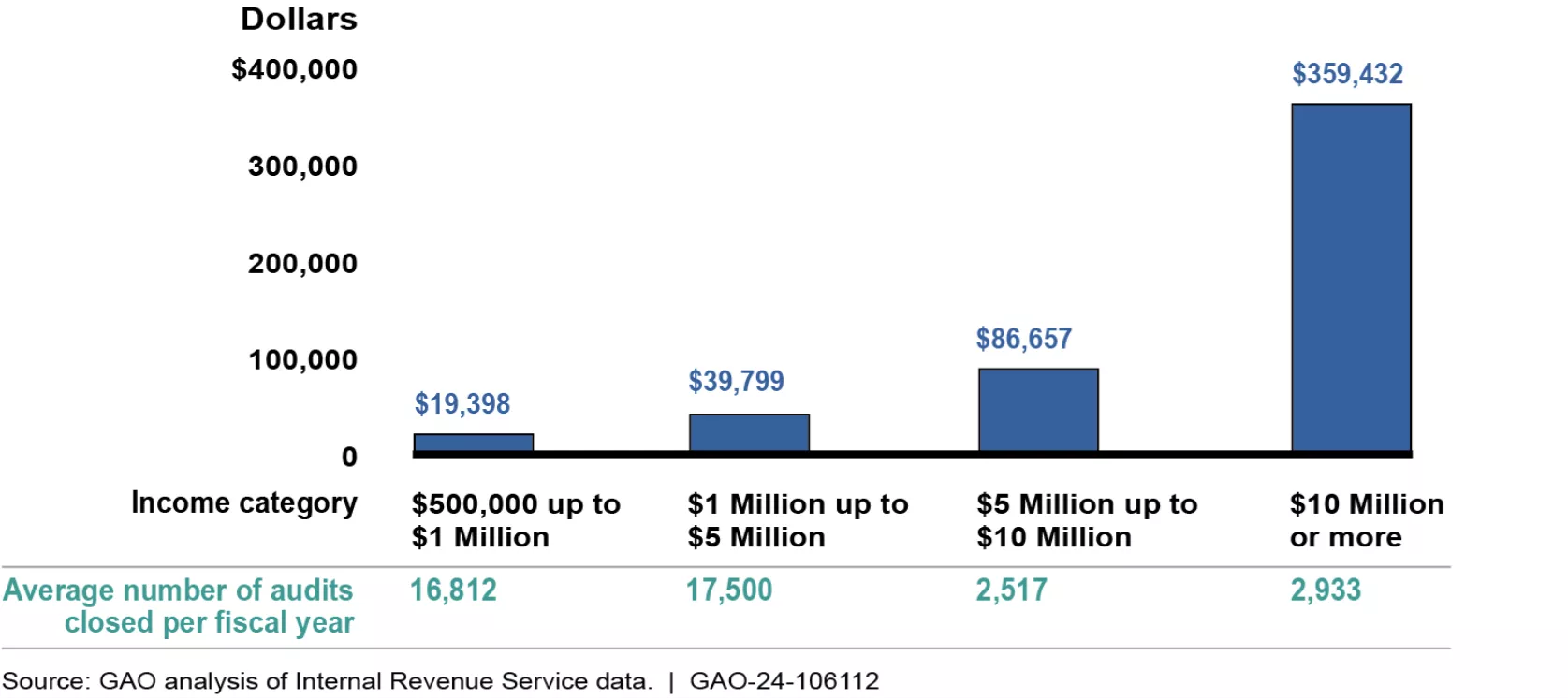Issue Summary
The Internal Revenue Service’s (IRS) mission is to provide American taxpayers with top-quality service by helping them understand and meet their tax responsibilities; it is also responsible for enforcing tax laws. After facing declining resources and increased workload for many years, in 2022, the IRS was appropriated tens of billions of dollars in funding over 10 years to modernize its operations and improve service and enforcement. There are a number of areas that IRS needs to address in doing so.
For instance:
- IRS reform. In response to the tens of billions in funding Congress provided to IRS to address longstanding tax administration challenges, such as outdated technology, IRS developed a plan on how it would spend the funds. However, it could better estimate and manage costs.
- Customer service. The IRS has struggled to provide customer service and process returns in a timely manner in recent years. The agency has continued to struggle to meet taxpayer service needs, including balancing telephone and correspondence services. For example, while IRS answered more phone calls in recent years with taxpayers waiting less time on hold, it was late responding to taxpayer correspondence more than half the time.
Millions of Taxpayers Await Responses From IRS
Image

- Direct file. In 2024, IRS piloted Direct File—a system that will guide certain taxpayers through preparing and filing their tax returns on IRS's website for free. IRS estimated that Direct File could cost $64-$249 million annually, depending on the number of taxpayers served. IRS also estimated that participating taxpayers may save $21 million in tax preparation costs. However, IRS's cost estimates did not include start-up costs, such as the technology required for a new system.
- High income/high wealth. In 2020, to address a decline in audit rates for the highest-income taxpayers, the Treasury Department directed IRS to audit at least 8% of tax returns filed by individuals with income of $10 million or more. While IRS has increased the number of these audits, IRS still needs to assess its: (1) research efforts to understand the complexity of high-income returns; (2) audit selection models to ensure IRS is not burdening compliant taxpayers; and (3) auditor hiring and training needs to address any staffing and skill gaps. IRS should also centralize its management of high-income/high-wealth audit programs.
As income increased, IRS recommended more taxes per audit, on average, but generally closed fewer audits.
Image

- Data safeguards. Taxpayers expect IRS to protect their sensitive personal and financial information. If taxpayers are not confident that IRS will do so, they are less likely to comply with tax laws. While IRS has several safeguards in place to protect taxpayer information, it has several issues. For example, among the 14,000 contractors IRS assigned to the Insider Threat Awareness program, only 66% completed training on how to handle taxpayer information.



